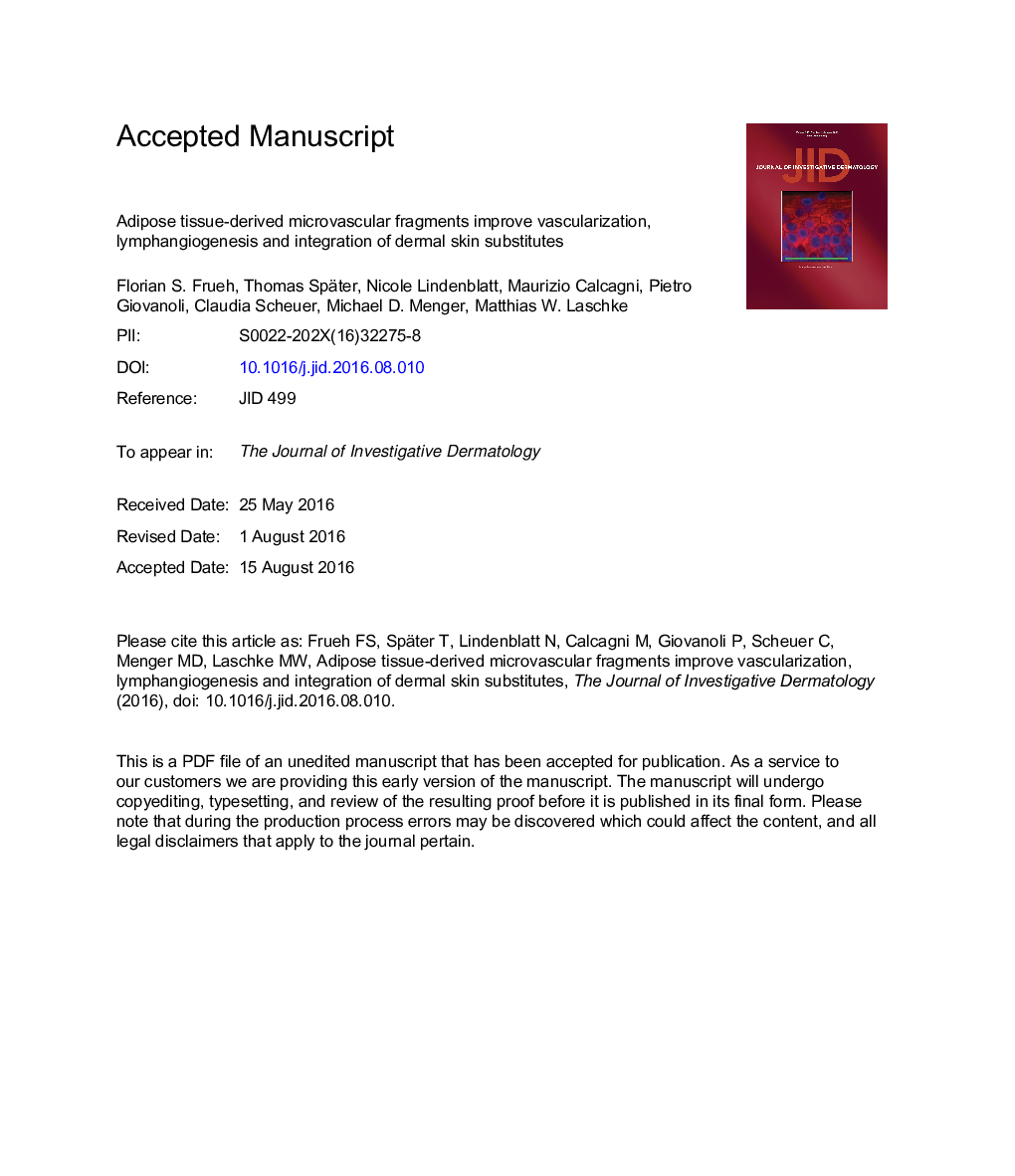| Article ID | Journal | Published Year | Pages | File Type |
|---|---|---|---|---|
| 5649846 | Journal of Investigative Dermatology | 2017 | 30 Pages |
Abstract
Full-thickness skin defects can be covered with dermal skin substitutes in combination with split-thickness skin grafts. However, slow vascularization of the matrices bears the risk of wound infection and extends the length of hospitalization. To overcome these problems, we describe a promising vascularization strategy. Green fluorescent protein+ adipose tissue-derived microvascular fragments (ad-MVF) were isolated from epididymal fat pads of C57BL/6-Tg(CAG-EGFP)1Osb/J mice. ad-MVF were seeded on collagen-glycosaminoglycan matrices, which were implanted into full-thickness skin defects in the dorsal skinfold chamber of wild-type C57BL/6 mice. Nonseeded matrices served as controls. Vascularization, lymphangiogenesis, and integration of the implants were studied by using intravital fluorescence microscopy, histology, and immunohistochemistry over 14 days. ad-MVF rapidly reassembled into microvascular networks within the implants, which developed interconnections to the host microvasculature. Accordingly, vascularization of the implants was markedly accelerated, as indicated by a significantly higher microvessel density when compared with controls. Moreover, dense lymphatic networks originating from the green fluorescent protein+ ad-MVF developed within the implants. This was associated with an improved implant integration. Hence, seeding ad-MVF on collagen-glycosaminoglycan matrices represents a potential strategy to reduce morbidity and hospitalization of patients undergoing the treatment of full-thickness skin defects.
Keywords
Related Topics
Health Sciences
Medicine and Dentistry
Dermatology
Authors
Florian S. Frueh, Thomas Später, Nicole Lindenblatt, Maurizio Calcagni, Pietro Giovanoli, Claudia Scheuer, Michael D. Menger, Matthias W. Laschke,
